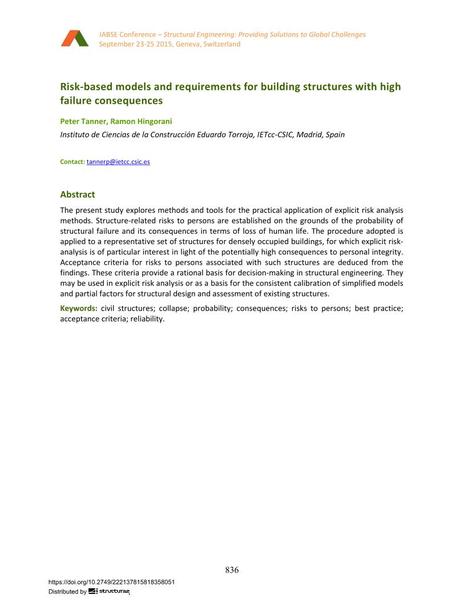Risk-based models and requirements for building structures with high failure consequences

|
|
|||||||||||
Détails bibliographiques
| Auteur(s): |
Peter Tanner
Ramón Hingorani (Instituto de Ciencias de la Construcción Eduardo Torroja, IETcc-CSIC, Madrid, Spain) |
||||
|---|---|---|---|---|---|
| Médium: | papier de conférence | ||||
| Langue(s): | anglais | ||||
| Conférence: | IABSE Conference: Structural Engineering: Providing Solutions to Global Challenges, Geneva, Switzerland, September 2015 | ||||
| Publié dans: | IABSE Conference Geneva 2015 | ||||
|
|||||
| Page(s): | 836-843 | ||||
| Nombre total de pages (du PDF): | 8 | ||||
| Année: | 2015 | ||||
| DOI: | 10.2749/222137815818358051 | ||||
| Abstrait: |
The present study explores methods and tools for the practical application of explicit risk analysis methods. Structure-related risks to persons are established on the grounds of the probability of structural failure and its consequences in terms of loss of human life. The procedure adopted is applied to a representative set of structures for densely occupied buildings, for which explicit risk- analysis is of particular interest in light of the potentially high consequences to personal integrity. Acceptance criteria for risks to persons associated with such structures are deduced from the findings. These criteria provide a rational basis for decision-making in structural engineering. They may be used in explicit risk analysis or as a basis for the consistent calibration of simplified models and partial factors for structural design and assessment of existing structures. |
||||
